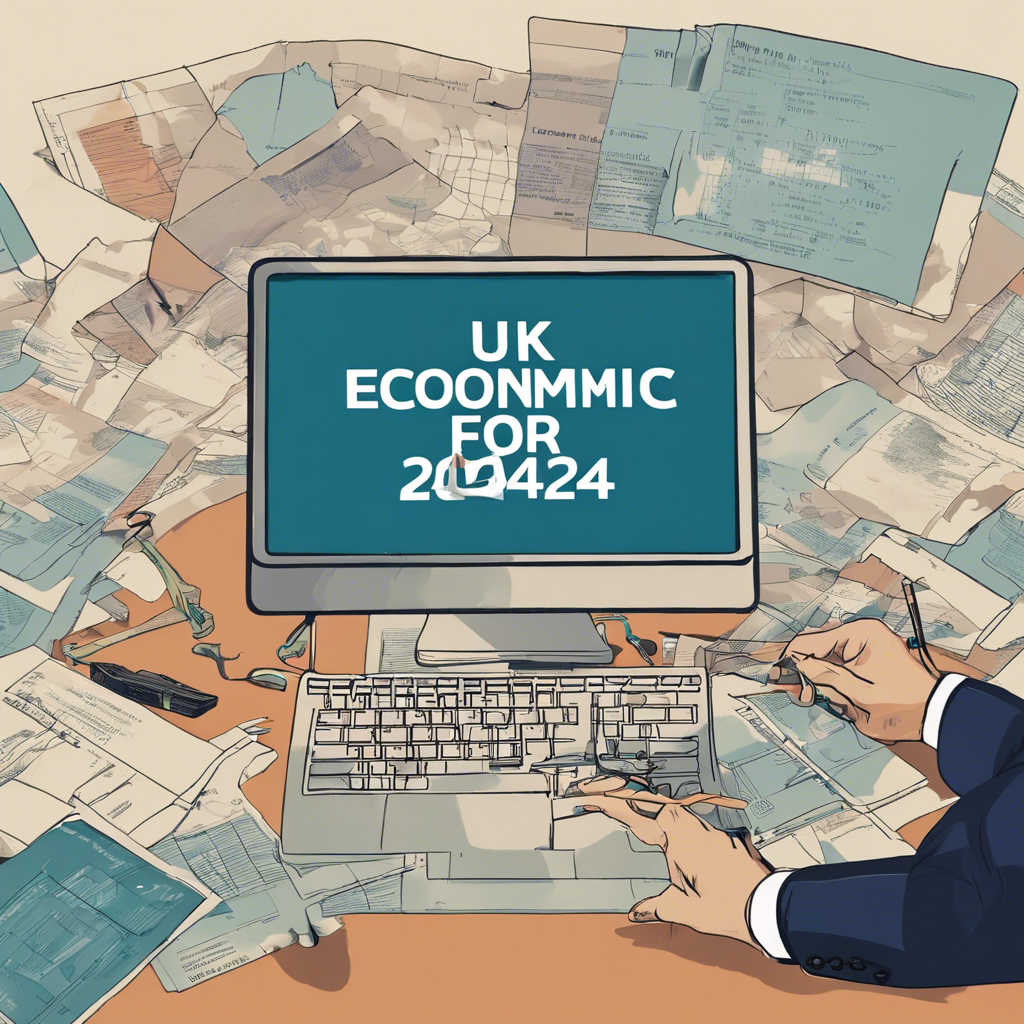UK Economic Outlook for 2024: Challenges and Uncertainties Ahead

Inflation, GDP Growth, Unemployment, Taxes, and Housing Costs Shape the UK’s Economic Landscape
As the UK enters an election year, the economy faces significant challenges that could impact households and businesses. Rising borrowing costs, higher taxes, and elevated living expenses have put pressure on the economy, raising concerns about its growth prospects. Chancellor Rishi Sunak aims to halve inflation by 2023, but the Bank of England warns of a 50-50 chance of a recession. With living standards projected to be lower at the end of the parliament than at the start, it is crucial to examine the key factors that underpin the UK’s economic prospects in 2024.
Falling but stubbornly above-target inflation:
Despite a decline in inflation from over 10% in January 2023 to 3.9% in November, the UK continues to grapple with persistently high inflation compared to other G7 countries. Cooling energy prices have driven the decrease, but the annual rate remains above the government-set target. The Bank of England predicts that inflation will stay above target until the end of 2025, putting pressure on households. While lower inflation indicates a slower rise in prices, it does not imply a decrease in overall prices. Financial markets anticipate interest rate cuts by the Bank of England to counter weak economic growth and cooling inflation. However, risks of persistent high inflation remain due to geopolitical tensions and a tight labor market.
Weak GDP growth:
Recent months have seen a slowdown in economic activity, with gross domestic product (GDP) unexpectedly shrinking in October. Higher living costs have placed sustained pressure on households, leading to concerns about a possible recession coinciding with a spring general election. The Bank of England predicts zero growth for 2024 as a whole. Chancellor Sunak has prioritized economic growth after years of lackluster performance. Although the UK’s economy proved more resilient to the shocks of the Covid pandemic and energy crisis in 2023, the Office for Budget Responsibility (OBR) expects slower growth in the coming years. The OBR projects growth of 0.7% for 2024, which is still less than half the average annual growth rate between 1998 and the 2008 financial crisis.
Rising unemployment:
The combination of weak economic activity and higher borrowing costs is expected to impact employers’ hiring intentions in 2024, potentially leading to a rise in unemployment. Despite the pressure on the economy, the UK’s jobless rate has remained historically low, mainly due to employers struggling to fill job vacancies. However, the number of job openings has decreased recently, signaling fading hiring demand. The OBR forecasts a peak of 1.6 million unemployed individuals (4.6% of the labor force) by the second quarter of 2025, up from the current level of approximately 1.5 million (4.2%). Average annual pay growth is also expected to decline to around 3.7% in 2024 and 2.2% in 2025, compared to a peak of 8% in 2023.
Tax cuts?
Taxes as a share of the economy are on track to reach their highest sustained levels since the postwar Labour government of Clement Attlee (1945-1951), despite recent tax cuts. The chancellor, Jeremy Hunt, reduced national insurance and offered tax relief on business investment. However, a six-year freeze on income tax thresholds has contributed to higher revenues for the exchequer. By 2028-29, taxes are projected to account for almost 38% of GDP, significantly higher than the pre-pandemic level of 33%. Chancellor Hunt is expected to announce tax cuts before the general election, but he faces constraints due to a commitment to reduce national debt within five years. The OBR estimates that Hunt will meet his target with approximately £13 billion to spare, although this projection assumed a rise in fuel duty that may not be implemented.
Soaring housing costs:
The Bank of England’s aggressive cycle of interest rate rises has led to a surge in housing costs, creating concerns about the mortgage market. As most home loans have fixed rates, higher costs are delayed. Since December 2021, approximately half of all mortgages have repriced, with an additional 5 million expected to be affected by 2026. The Bank predicts that typical owner-occupiers rolling off a fixed rate between mid-2024 and late 2026 will experience a monthly repayment increase of around £240, a jump of about 39%. Landlords have responded to increasing borrowing costs by raising rents or selling properties, contributing to the sharpest increase in private sector rents on record.
Conclusion:
The UK’s economic outlook for 2024 is marked by challenges and uncertainties. Despite a decline in inflation, it remains stubbornly above target, putting pressure on households. Weak GDP growth and the risk of a recession coincide with the upcoming general election. Rising unemployment and cooling inflation may impact hiring demand and average pay growth. Taxes are set to reach sustained high levels, and the chancellor faces constraints in implementing tax cuts due to the commitment to reduce national debt. Soaring housing costs pose a threat to the mortgage market, affecting homeowners and landlords alike. As the election year unfolds, these factors will shape the UK’s economic landscape and impact the lives of its citizens.

